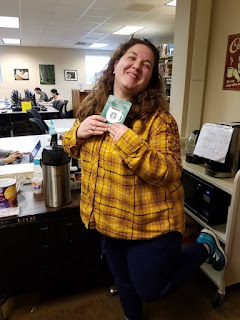By Ashlyn Henderson
Motlow Buzz Contributor Writer
Many people think that thrift stores are for people who cannot afford to shop at name- brand shops or that thrift stores have ugly clothes, but that is not the case. Most items are marked for a fraction of the cost of what they are priced initially at in stores. For example, I have bought four very expensive name brands items in the past at Goodwill for $23 that would originally retail well over $100.
I just recently moved and went through my closet to get rid of almost half my wardrobe. I decided to shop at a local thrift store to replenish the clothing items I gave away to Goodwill. I found great brand names, deals and steals at a few consignment stores near me. A few brand-name items I found at a thrift store were Patagonia, Birkenstock and Free People.
While thrift shopping can help you build your perfect wardrobe, it also saves you a tremendous amount of money. I shopped at Goodwill the past month and spent a total of $89.47. I searched on Amazon.com for the prices of each item, and everything I bought added up to $279. Overall, I have saved roughly $200 this past month by thrift shopping.
Thrift shopping sounds all fun and games, but there are tricky parts to it. Thrifting can be overwhelming and it may be hard to find cute name-brand items when you first start. Do not expect to walk in and automatically see them. It is overwhelming because you have such a wide to selection search through, but I have a few tips and tricks to help you maneuver your way through all the chaos.
First Tip: Know Your Brands
Do your research before you go in, so they are easier to spot. Some brands to look out for that are not well known, but expensive brands are Alden, Brook Brothers, Cartier, and Dunhill. If you find an item that is more on the expensive side of a thrift store, google it! I found a pair of jeans at Goodwill that were about $10, so I googled it. It ended up being a $120 pair of jeans. Check out this link to familiarize yourself more of brands you might not know about: https://www.reddit.com/r/frugalmalefashion/comments/1y07bo/brands_to_look_out_for_at_thrift_shops/.
Second Tip: Have an Idea of What You Want
If you go into a thrift store having no idea what youre looking for, the search will be exhausting and overwhelming. For example, say you knew you wanted or needed colored jeans. You search in the jean area, and they have a section for colored pants. If you go in with the slightest bit of knowledge of what you want, you will be more successful than if you went in and search every single section of the store.
Third Tip: Quality over Quantity
I know it is easy to throw everything you like into the basket without thinking twice about it because it is cheap. As you are searching through the racks, check the shape that the article of clothing is in. Look at the hardware. Are all the buttons there? Are there any stains or holes? Do the zippers work? If so, be practical with yourself. Are you actually going to buy the materials to fix the item? If there is damage and you are not willing to fix it, try and see if the store will give you a discount on the item.
Fourth Tip: Go Out of Your Comfort Zone
If you are a woman, do not limit yourself to only women’s clothing. Branch out and shop in the men’s section! It might feel odd shopping in the men’s section, but I have found some of my most unique finds there, including vintage sweatshirts, jean jackets, and button-ups.
Fifth Tip: Familiarize Yourself with Thrift Stores near You
Find different thrift stores near you other than Goodwill. Familiarizing yourself with more option to shop at will give you a better chance to locate precisely what you are looking for. There are thrift stores, consignment and resale stores, and online sellers. Two of my favorite online resale stores are Poshmark and Mercari. They are both apps that are free to download on an Android or iPhone, and easy to find great deals on. Plus, you can even resell some of your items on there as well!

 See a video of Vanessa Blanco explaining how to shop and sell on Mercari and Poshmark: https://www.youtube.com/watch?v=QHaL9IG4O3E. To learn more about this app or to try it out, visit https://poshmark.com/ and https://www.mercari.com/.
See a video of Vanessa Blanco explaining how to shop and sell on Mercari and Poshmark: https://www.youtube.com/watch?v=QHaL9IG4O3E. To learn more about this app or to try it out, visit https://poshmark.com/ and https://www.mercari.com/.




















